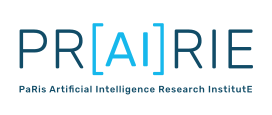Learning cell fate landscapes from spatial transcriptomics using Fused Gromov-Wasserstein
Résumé
Here, we propose STORIES, a method that employs an extension of Optimal Transport to learn a spatially informed potential. We benchmark our approach using three large Stereo-seq spatiotemporal atlases and demonstrate superior spatial coherence compared to existing approaches. Finally, we provide an in-depth analysis of axolotl neural regeneration and mouse gliogenesis, recovering gene trends for known markers as Nptx1 in neuron regeneration and Aldh1l1 in gliogenesis and additional putative drivers.
Domaines
Sciences du Vivant [q-bio]| Origine | Fichiers produits par l'(les) auteur(s) |
|---|---|
| licence |



